Metro Goldwyn Mayer Logo
This submission is currently being researched & evaluated!
You can help confirm this entry by contributing facts, media, and other evidence of notability and mutation.
About
The Metro Goldwyn Mayor Logo is the Logo of the studio Metro Goldwyn Mayor. Leo the Lion is the mascot for the Hollywood film studio Metro-Goldwyn-Mayer and one of its predecessors, Goldwyn Pictures, featured in the studio's production logo, which was created by the Paramount Studios art director Lionel S. Reiss.
Since 1924 (when the studio was formed by the merger of Samuel Goldwyn's studio with Marcus Loew's Metro Pictures and Louis B. Mayer's company), there have been around five different lions used for the MGM logo (although two other lions were used for MGM's two-strip Technicolor films in the late 1920s and early '30s). These lions include Tanner, and Leo, the current (and fifth) lion. Tanner was used on all Technicolor films and MGM cartoons (including the Tom and Jerry series), and in use on the studio logo for 22 years (Leo has been in use since 1957, a total of 55 years and counting). However, when the MGM animation department, which had closed in 1958, reopened with the Chuck Jones-directed Tom and Jerry shorts in 1963, these shorts used Tanner in the opening sequence rather than Leo, who had already been adapted onto the studio logo and the 196
Logos
Slats
Slats was the first lion used for the newly-formed studio. Slats was used on all black-and-white MGM films between 1924 and 1928. The original logo was designed by Howard Dietz and used by the Goldwyn Pictures Corporation studio from 1917 to 1924 . The first Goldwyn Pictures film to feature Leo the Lion was Polly of the Circus (1917). Goldwyn Pictures was ultimately absorbed into the partnership that formed MGM, and the first MGM film that used the logo was He Who Gets Slapped . Unlike his successors, Slats did nothing but look around in the logo (as did the Goldwyn Pictures lion). Slats died in 1936, his skin is currently on display at the McPherson Museum in McPherson, Kansas.
Jackie
Jackie was the second lion used for the MGM logo. He was also the first MGM lion to roar, which was first heard via a gramophone record. This was done for MGM's first sound production, White Shadows in the South Seas (1928). Jackie growled softly; this was followed by a louder roar, a brief pause, and then a final growl, before he looked off to the right of the screen. Jackie died on February 26, 1952.
Interestingly, in the early 1930s, MGM reissued some of its earlier silent films with soundtracks containing recorded music and sound effects. Among the films reissued in this manner were Greed (1924), Ben-Hur (1925) and Flesh and the Devil (1926). For these sound reissues, Jackie was used instead of Slats, causing some film authorities to assume that the lion had been in use before 1928.
Two-Strip Technicolor Experiments (1927–1934)
One of the two lions (referred to as "Coffee") used for Technicolor test logos on early MGM color productions (1932–1935).
MGM began experiments with two-color short subjects in 1927 and animated cartoons in 1930. Two two-strip Technicolor variations of the MGM logo were created, with two different lions being used. The first lion (referred to as "Telly") appeared on all color MGM movies until 1932. The second lion (referred to as "Coffee") made his debut in 1932, appearing on color films until 1934 (and 1935 for the Happy Harmonies shorts), when production was switched to full three-strip Technicolor filming.
Tanner
Tanner, whose first appearance was before the short subject Star Night at the Coconut Grove (1934) (his first feature film appearance was before Sweethearts four years later, in 1938), was MGM's third longest-lived lion to be used (for a total of 22 years), after Jackie (who was used for a total of 28 years) and the current lion (who has been retained for 55 years). It is this version of the logo that was the most frequently used version throughout the Golden Age of Hollywood, although color did not really become the norm until the 1960s, and even then, black-and-white films were made more often than they are today. An extended version of this logo appeared on the short Star Night at the Coconut Grove and early James A. Fitzpatrick Traveltalks color shorts. This version features Tanner roaring as usual, but lasts a few seconds longer to feature two additional roars from the lion.
George
The fourth lion, officially named George, was introduced in 1956, and appeared more heavily maned than any of the predecessors and the current lion. Two different versions of this logo were used; one with the lion roaring toward the right of the screen and then roaring at the camera, and another with the lion roaring twice toward the right of the screen. This logo would have either a black or dark brownish/grayish background; a blue background variant has been spotted on The Wings of Eagles (1957). This logo would also appear on black-and-white movies. From 1957 to 1958, this lion was used in tandem with the current lion.
Leo
Leo, the fifth lion, is MGM's longest-lived lion, having appeared on most MGM films since 1957. He has a smaller mane than any of the other lions (which is because he was at a very young age compared to his predecessors when his roaring was filmed).
In addition to being used as the MGM lion, Leo also appeared in Tarzan movies starring Mike Henry and the television series that starred Ron Ely, in addition to other productions such as the religious epic King of Kings (1961), Zebra in the Kitchen (1965), Fluffy (1965) and Napoleon and Samantha (1972); as well as a memorable TV commercial for Dreyfus Investments in 1966.
Other Logos
Other Parodies have been made such as A Croc, Fozzy Bear, Dumbledore, and Many others
Recent Videos
There are no videos currently available.
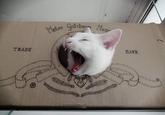
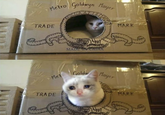

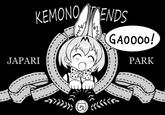

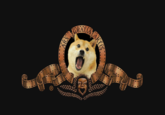
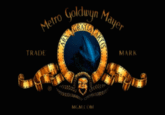

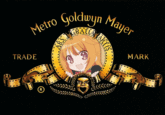

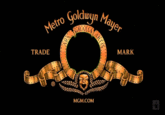

Display Comments